How to receive Freeview on your PC
 Brian Butterworth published on UK Free TV
Brian Butterworth published on UK Free TV If you want to watch digital television, one of the way to do this is use your PC. There are three main options, starting at around only 20.
Option 1: USB box
If you have a laptop computer, or do not wish to take your computer apart to fit a card into it, the most straightforward way is to use a USB box.Once you have purchased the box, you first need to install some software on your computer. This will come on the CD with your USB package, or you can download the latest software from the company's web site. As a general rule, the on-line software will be a more up-to-date version.
You then plug the box into your roof-mounted aerial connection, and attach the USB cable to one of the USB ports on your computer. If you have USB 2 ports you should use these to get the best possible results.
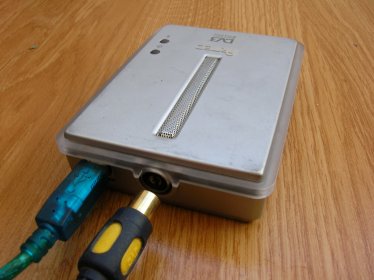
Now start the "Digital TV" software. The first time you use it, you will need to scan for the Freeview channels. This can take several minutes (a lot longer than a Freeview set-top box).
Once this has completed, you will be able to select from the Freeview channels that are available in your area.
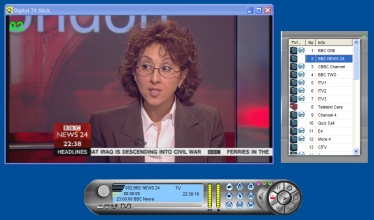
The software that comes with these boxes has two drawbacks: the channel numbers are not the standard Freeview ones (in the example, BBC News 24 is on channel 2 rather than channel 80), and there are no interactive services. This means you cannot view BBC Parliament at all, or have the graphical screens when listening to the radio channels.
On the plus side, these boxes do support the full 14 day Freeview programme guide. You can use you PC as a PVR (personal video recorder) as the software will record the Freeview transmission and save them as MPEG-2 (.mpg) files.
Option 2: PCI card
Another option is to use a PCI card. This will keep the equipment within your PC, but does require the confidence to open up your PC.
To install a PCI card you MUST first ensure that your computer is unplugged from the mains. It is not enough to switch it off using the button on the front; you must ensure that it is disconnected from the mains.

Locate a free PCI slot - you will need a screwdriver to remove any blanking plate.

You must ensure that after seating the card firmly in the slot that your digital TV card is securely fastened into the slot. The thick television aerial cables are sturdy and can easily rip out a card that is not firmly fixed.

Once you have replaced the case of the computer, you can then attach the aerial connection to the appropriate connection.

The software installation and operation of the digital television software is otherwise identical to a USB box.
Option 3: Media Center
Microsoft Windows XP Media Center Edition 2005 has full personal video recorder support, and if you have this version of Windows you do not need to install any software, just one or two PCI cards.One requirement is that you must have installed some DVD playing software before you can watch the programmes.
The set-up is slightly more complicated than the above, but this results in a easy-to-use programme guide and sophisticated recording facilities.
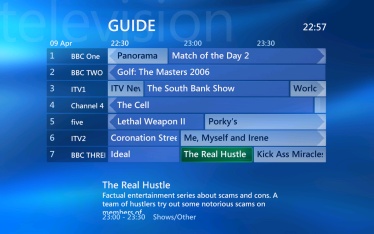
Another advantage of using the Media Center software is that all your recorded TV can be watched by any other PC connected to your home network and by any Xbox 360 you may have.
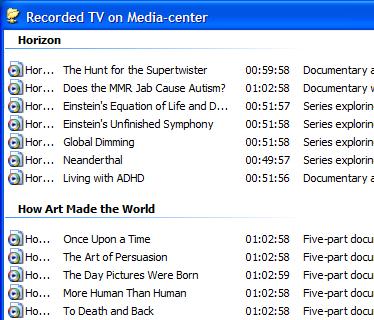
There is now full support for the Freeview digital radio channels, but there are no red button text facilities. However, there is a full BBC News player in Media Center's Online Services menu.
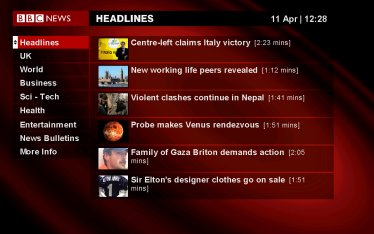
Help with Television sets?
Monday, 6 June 2011
D
Dave Wood11:20 PM
I have just installed a KWorld DVB-T PC-160-2T PCI card into my home built Win 7 computer
This is not recognized by Media CEntre.
Also only BBC1,2,3,4,Parliment plus about 10/12 BBC Radio stations found.
Drivers, Hyper Media Centre and Remote drivers all downloaded from KWorld.
Help please
| link to this comment |
Tuesday, 7 June 2011
Dave Wood: I'm a bit confused. The card must be recognised by Windows if you can see the channels on the BBCA multiplex, surely?
| link to this comment |
S
shannow58588:28 AM
Stevenage
Dave Wood:
Hi dave I live in Stevenage (( sg2 8tz))and we have a dish on the roof , I live in supported housing .
How can I find out where my signal is coming from .
My receiver is a builtin P/H TV
| link to this comment |
shannow5858's: ...
shannow5858: If you have a dish, the signal is coming from the Astra 2 satellites.
| link to this comment |
Friday, 5 August 2011
M
Matthew6:54 PM
have you tried using a hd telly as a monitor then you could just plug it into the tv but make sure it has a hdmi output and input hope this helps
| link to this comment |
Tuesday, 23 August 2011
S
Stephen Who3:37 PM
If a Freeview box struggles to receive standard definition, will HD be more difficult to receive?
Since each 1s burst of interference would destroy more data in HD, I imagine it could well be more difficult to get HD in areas of marginal coverage.
Or is this offset by utilising more sensitive receivers, or a more robust error-correcting protocol?
If there's a glitch on HDTV reception, do any boxes fallback to Standard-definition?
And if you want to record a programme, is there any standard for how long a recording should continue in the absence of a signal?
If I try to record for 24h and my aerial falls down for 2s or 2 minutes or 2 h,
will I lose:
(a) the programme recorded until then
(ie temporary file not saved)
(b) the program recorded.
And do any boxes allow 24h recordings
(as did old VHS tapes with timers,
subject to capacity).
As opposed to recording a programme on the EPG, which is subject to change, particularly on news channels, and might lead to gaps in coverage.
| link to this comment |
Thursday, 25 August 2011
Stephen Who: OK, here's the answers
"If a Freeview box struggles to receive standard definition, will HD be more difficult to receive?"
No, at the same power levels 64QAM/8k/DVB-T has the same coverage as 256QAM/DVB-T2.
"Since each 1s burst of interference would destroy more data in HD, I imagine it could well be more difficult to get HD in areas of marginal coverage. "
I suspect you need to know about how COFDM works - there are many carriers (thus "8k") and each is protected by being broadcast with a "guard interval" and forms of error protection. This protects against interferece in a highly non-linear way. See How digital television works | ukfree.tv - independent free digital TV advice -
"Or is this offset by utilising more sensitive receivers, or a more robust error-correcting protocol? "
It's the latter.
"If there's a glitch on HDTV reception, do any boxes fallback to Standard-definition? "
No, the SD broadcasts are carried on a different multiplex and are not synchronised and are generally different services (BBC One HD is national, not regional, BBC HD has no SD version, ITV1 HD has fewer regions, C4 HD has no ad regions).
"And if you want to record a programme, is there any standard for how long a recording should continue in the absence of a signal?
If I try to record for 24h and my aerial falls down for 2s or 2 minutes or 2 h,
will I lose:
(a) the programme recorded until then
(ie temporary file not saved)
(b) the program recorded. "
The receiver will attempt to record as many bits from the scheduled start time to the schedued end time.
"And do any boxes allow 24h recordings
(as did old VHS tapes with timers,
subject to capacity).
As opposed to recording a programme on the EPG, which is subject to change, particularly on news channels, and might lead to gaps in coverage."
All modern receivers actually wait for a programme to start and end as the EPG is updated dynamically as the content is tagged in the live broadcasts.
| link to this comment |
Friday, 26 August 2011
A
Andre10:32 PM
If I Use a Vga Splitter and A Vga to Scart with Freeview Box Do You thikn It Would Work?
| link to this comment |
Saturday, 27 August 2011
Andre: If you use a SCART->VGA device, it must be able to provide the additional synchronization signals and not just be a "lead".
| link to this comment |
Monday, 29 August 2011
Select more comments
Your comment please!